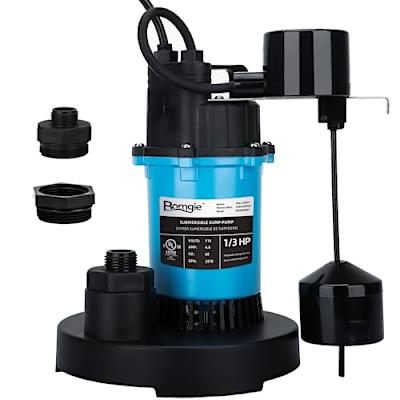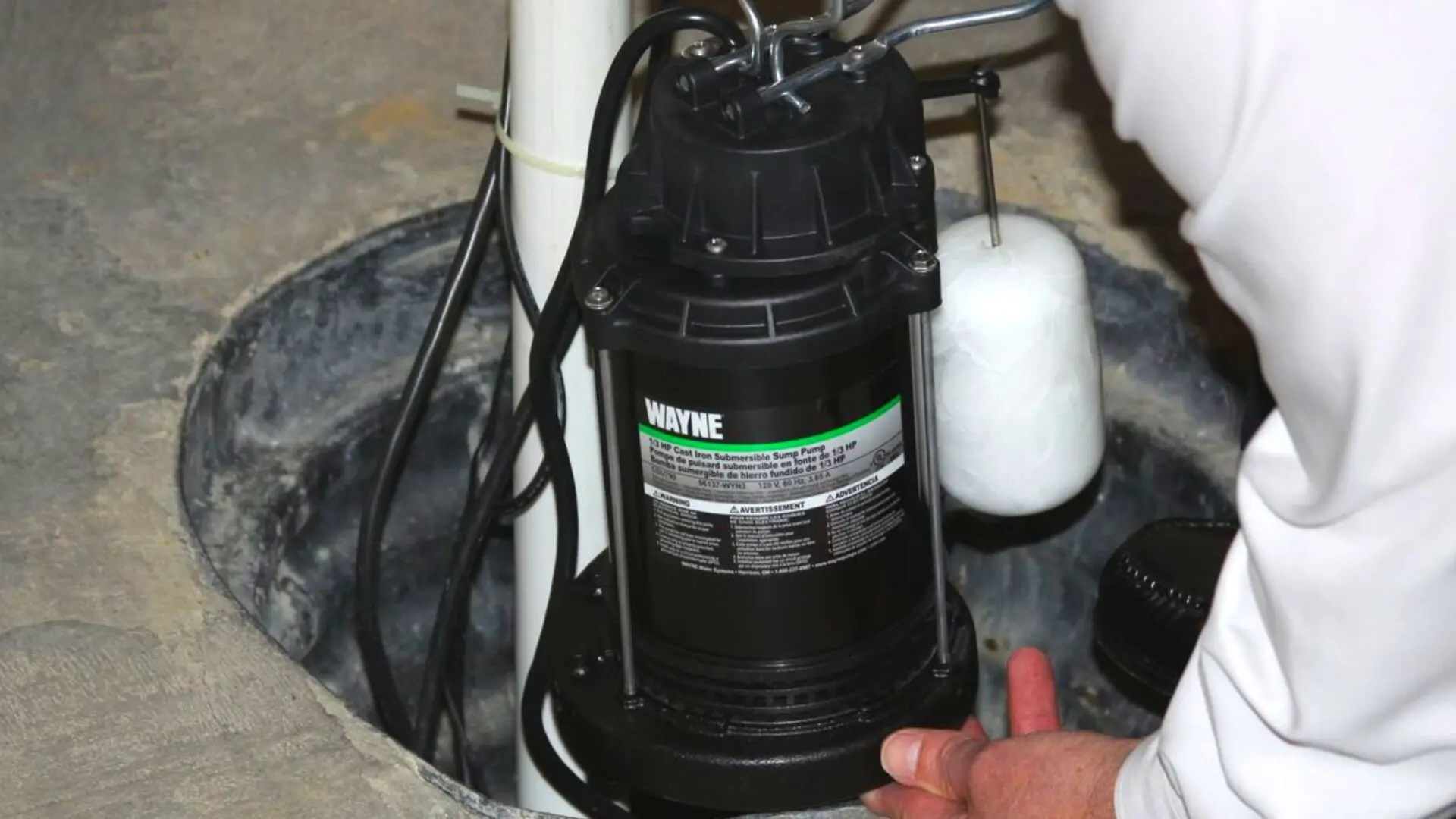Recommended Steps for Caring for Your Sump Pump
Recommended Steps for Caring for Your Sump Pump
Blog Article
What're your insights and beliefs on Steps to Cleaning Your Sump Pump Properly?

Sump pumps are vital elements in lots of homes, particularly in locations prone to flooding or extreme wetness. They aid avoid water damage by efficiently removing excess water from basements or crawl spaces. Nevertheless, like any other home appliance, sump pumps call for routine upkeep to guarantee they work successfully when required the most. Cleansing your sump pump is an essential part of its maintenance, and comprehending how to do it appropriately can save you from expensive repair work and prospective catastrophes.
Introduction
Preserving a tidy sump pump is vital for its appropriate performance and long life. Overlooking this vital task can bring about clogs, breakdowns, and eventually, water damages to your home. For that reason, finding out exactly how to cleanse a sump pump is essential for property owners that rely on these gadgets to keep their basements completely dry and safeguarded.
Understanding the Sump Pump
Prior to diving right into the cleaning procedure, it's essential to have a standard understanding of exactly how a sump pump functions. Commonly set up in a pit or basin below the cellar flooring, a sump pump includes numerous essential elements, consisting of a pump, a float button, and a discharge pipe. When water collects in the pit, the float button activates the pump, which after that pumps the water out through the discharge pipe, away from the structure's structure.
Signs of a Dirty Sump Pump
Knowing when your sump pump requires cleaning is critical for stopping possible malfunctions. Some typical indicators that indicate a dirty sump pump include odd sounds during operation, lowered water circulation, and noticeable debris in the pit. If you notice any of these symptoms, it's vital to cleanse your sump pump promptly to avoid any type of additional problems.
Getting ready for Cleansing
Prior to you begin cleaning your sump pump, it's essential to take some security precautions. Beginning by turning off the power to the pump to stay clear of any kind of electric accidents. Furthermore, put on suitable protective gear, such as gloves and safety glasses, to protect on your own from dust, debris, and possible virus.
Detailed Overview to Cleaning a Sump Pump
Turning off the Power
Begin by disconnecting the power supply to the sump pump to stop any type of mishaps while cleansing.
Getting Rid Of Debris and Dust
Use a bucket or a scoop to remove any kind of noticeable debris, dirt, or debris from the sump pit. Dispose of the debris appropriately to prevent it from blocking the pump or the discharge pipeline.
Cleaning up the Pump and Drift Switch
Once the pit is free from debris, carefully eliminate the pump from the pit. Evaluate the pump and the float switch for any type of indicators of damage or wear. Make use of a soft brush or towel to clean the surface areas and remove any accumulated grime.
Purging the System
After cleansing the pump and float switch, purge the sump pit with tidy water to eliminate any type of remaining dirt or debris. This will certainly aid make sure that the pump operates efficiently and successfully.
Checking for Proper Performance
Before re-installing the pump, carry out a quick test to make sure that the float button activates the pump correctly. Put some water into the sump pit and observe the pump's procedure. If every little thing is working correctly, you can reassemble the pump and reconnect the power supply.
Maintenance Tips to Maintain Your Sump Pump Clean
In addition to routine cleansing, there are numerous maintenance ideas you can comply with to maintain your sump pump in ideal condition:
Conclusion
Cleansing your sump pump is a vital aspect of its maintenance and ensures that it runs effectively when you require it one of the most. By following the steps laid out in this overview and integrating regular maintenance into your regimen, you can prolong the life-span of your sump pump and protect your home from water damages.
6 STEPS ON HOW TO CLEAN A SUMP PUMP PROPERLY
UNDERSTANDING SUMP PUMPS
Your sump pump plays a crucial role in protecting your home by managing and removing excess water. It primarily functions as a “shield”, guarding your basement against the damaging effects of water accumulation. The pump is housed in a sump pit in the lowest part of your basement, and its job is to pump out any water that collects there.
During heavy rainfalls or when snow melts rapidly, water can infiltrate your basement, posing potential risks like flooding, structural damage, and harmful mold growth. Here, the sump pump springs into action, pumping out the intruding water and directing it away from your home.
SAFETY FIRST
Before cleaning, remember to prioritize safety. Disconnect the sump pump from the power source to prevent any accidental electric shocks. Also, wear sturdy gloves to protect your hands from any sharp or dirty components within the pump.
REMOVE THE SUMP PUMP
After ensuring your safety, the next step is to remove the sump pump from its pit. Doing this might require careful maneuvering as you don’t want to damage any pump components. Once removed, clean the sump pit to remove any accumulated debris or sludge.
INSPECT THE PUMP
Inspect the pump for any visible signs of wear or damage. Check the power cord, float switch, and impeller housing. If any components look worn out or damaged, consider replacing them to ensure optimal performance.
CLEAN THE PUMP
Thoroughly clean the pump with warm, soapy water. Make sure to rid it of any dirt, gravel, or other debris that might impede its performance. You can use a toothbrush to clean the small, hard-to-reach parts of the pump.
REINSTALL THE SUMP PUMP
Reinstall the pump into the sump pit Make sure it’s positioned correctly to remove the water effectively Once it’s back in place, reconnect it to the power source TEST THE PUMP
Finally, pour some water into the pit to ensure the pump works correctly. It should start automatically and begin pumping out the water; if it doesn’t, check the power source and the positioning of the pump.
Remember, while cleaning your sump pump is an essential part of home maintenance, hiring a professional plumber for a thorough inspection and cleaning at least once a year is also important. This will ensure that your pump is in optimal condition, ready to protect your home from potential water damage.
BEST PRACTICES FOR CLEANING SUMP PUMP DISCHARGE PIPES
Regular Inspection: Regularly inspect your discharge pipes, especially during heavy rainfall or snowmelt periods. Look for any signs of blockage or damage. Early detection of problems can prevent serious issues down the line. Periodic Cleaning: Over time, sediment and debris can accumulate in the discharge pipes, impeding the flow of water. Regular cleaning helps keep the pipes clear and functioning efficiently. You can use a high-pressure water jet to effectively clean the pipes. Insulation During Winter: In colder climates, discharge pipes can freeze, blocking the outflow of water. Protect your discharge pipes from freezing temperatures by insulating them with foam pipe insulation. This will ensure the sump pump can continue to discharge water even in freezing conditions. Proper Positioning: The discharge pipe should be positioned to direct water away from your home’s foundation. Improper positioning can lead to water seeping back into the basement. Ensure the pipe is long enough and angled correctly. Installation of a Check Valve: A check valve prevents water from flowing back into your sump pit after the pump has pushed it out. Installing a check valve helps maintain the efficiency of your sump pump and reduces the risk of flooding. Minimize Pipe Turns: Every curve or turn in the discharge pipe can decrease the efficiency of water flow. By minimizing turns and bends in your discharge pipe, you can increase the efficiency of your sump pump. https://www.fullspeedplumbing.com/how-to-clean-a-sump-pump-properly9999/

Do you like more info about ? Leave a remark down below. We will be glad to see your thoughts about this write-up. In hopes to see you back again in the future. Do you know somebody who is in the market for the niche? Do not hesitate to share it. Thanks a lot for your time spent reading it.
Call Today Report this page